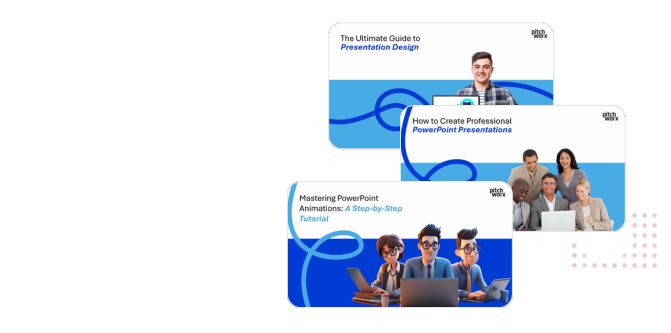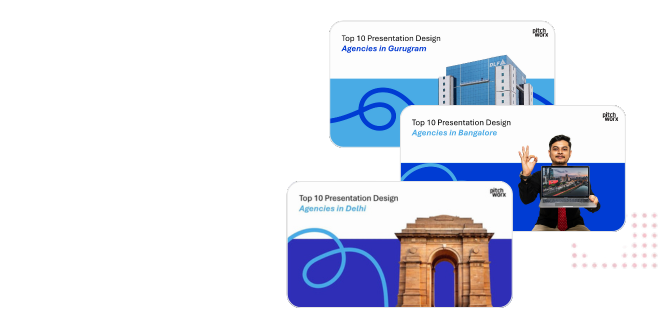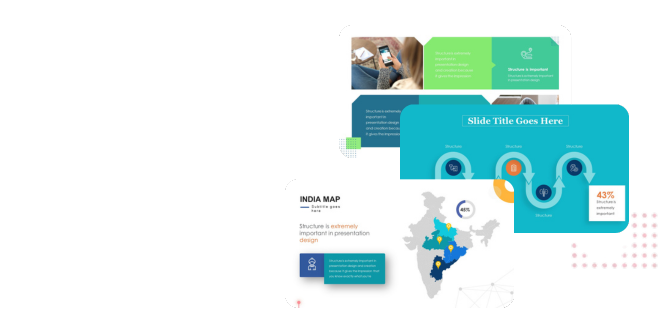When you are a product manager who has had to demonstrate new solutions countless times over your career, you know how difficult it can be to create a compelling product demonstration. Too often, presenters simply click through dry PowerPoint slides filled with bullet points, oblivious to the glazed looks in the audience. Infact, you would’ve certainly sat through your fair share of lackluster presentations before realizing there was a better way.
As a presentation design agency with a decade’s experience in crafting presentations, we’ve identified some key strategies to craft product demonstrations that truly engage rather than bore your audience. By focusing on storytelling, creative visuals, and audience participation, you can deliver lively presentations that inform and excite.
Build a captivating narrative
The art of presenting products effectively lies in building a captivating narrative. Every great presentation starts with an introduction that draws people in by introducing a problem they relate to. For example, when demonstrating a new analytics solution, you might begin with a story about the challenges a marketing manager faces in understanding campaign effectiveness with existing tools. This helps the audience connect with the narrator’s perspective and the issues that need solving.
Next, build anticipation by alluding to how your product will address these pain points without giving away the full details just yet. You want a hook that keeps them curious to see the reveal of the solution. Think about how a novelist crafts twists and cliffhangers across their book chapters to pull readers along, similarly a good presentation designer can craft a presentation that makes you want to learn more about the product.
Finally, segue into a demo that walks through specific capabilities and shows how each element elegantly solves a piece of the larger problem. Wrap up with examples and benefits that leave them eager to try the product themselves. This narrative technique replaces dry facts with an engaging story people can relate to.
Show, don’t just tell
There’s nothing more mind-numbing than staring at walls of text on PowerPoint slides. To have an engaging product presentation, resist the temptation to only discuss product features. Your demos should actively show the product in action as much as possible.
Leverage video clips, animated demos, screenshots, slide transitions, and live product usage to demonstrate how the solution works. For example, when demonstrating a mobile app interface, have your demo device connected to a projector so people can see you navigate the actual app in real-time.
Seeing is believing. Don’t just tell people your product is easy to use – show them how simple the key workflows are. Proclaiming your UI is beautiful is hollow – cycle through visually stunning screens instead. Back up claims with evidence people can see with their own eyes.
Focus on real-world benefits
Now, let’s discuss another aspect of how to master product presentation skills. A common mistake presenters make is fixating on technical capabilities without tying them to practical benefits. Don’t get lost in the spec sheets – focus your narrative on articulating how the product improves your audience’s lives.
For example, if demonstrating the amazing speeds of your new processor, look for opportunities to quantify real-world impact. How much faster will this render videos for a filmmaker? How many more simultaneous transactions can a retailer process? Tie capabilities to concrete use cases.
An especially compelling technique is to have real users demonstrate the product while they describe their experience. It’s one thing to state your app improves productivity – it’s far more impactful when an actual customer explains how it helped them get home earlier to their family thanks to time savings. Back up your claims with real-world testimony.
Plan surprising reveals
Unveil key features strategically across your demonstration to sustain interest. Don’t lay all your cards on the table up front – tease and tantalize them bit by bit to make the reveal exciting. Time key demo points and transitions for maximum impact with the help of presentation designers.
For example, you might initially demonstrate only basic functionality, perhaps even poking fun at the limitations to make the audience think this falls short of their expectations. Then, when you unveil the advanced capabilities, it reframes perceptions and delights them by exceeding their initial assumptions. This showmanship amplifies the wow factor and is a great tip to master product presentations.
Get the audience engaged
Don’t just broadcast information – actively engage your audience in the experience. This is one of the key product presentation best practices to follow. Poll them for input on what features they find most useful. Pause for Q&A sessions throughout your presentation. Invite attendees to interact with demos directly from their own devices for hands-on participation.
Their active involvement will make the experience more memorable while showing your confidence in letting the product speak for itself. Just be cautious not to lose too much presentation momentum with excessive interruptions. Strike the right balance based on audience size and event goals.
Practice like you’re performing live theater
Refine your wording, delivery, transitions, demos and flow through extensive rehearsals. Become intimately familiar with the content and the slides crafted by presentation designers so your delivery appears natural and authentic. If it feels like memorized lines, your audience will disengage. Strive for a conversational, off-the-cuff style.
You can even record yourself on videos to critique issues and identify sections that lack energy. Pay attention to body language – are you bouncing with enthusiasm or anchored to the podium? With preparation, your comfort level will rise dramatically. Skimp on practice and you risk a disjointed, stilted delivery.
Here are some tips to help you start master product demos:
- Refine the storyline, slide order, transitions and interactive elements until they flow smoothly. Time yourself for proper pacing.
- Pay attention to cadence, tempo, and vocal variety during rehearsals. Polish any verbal tics or awkward body language.
- Seek observer feedback on areas like stage presence, enthusiasm, and audience engagement.
- Record rehearsals and review the footage to continually refine and enhance your skills.
With these tips, you can elevate your product demonstrations from drab to dramatic. Combine compelling narrative, creative visuals, interactivity and showmanship to craft presentations that educate and entertain. Master these techniques and you’ll confidently showcase the power of your solutions while winning over audiences. All of these techniques combined with a professionally made presentation crafted by a presentation design agency like PitchWorx, will be your key to a successful product demonstration. One that aims for clarity, depth and impact!










